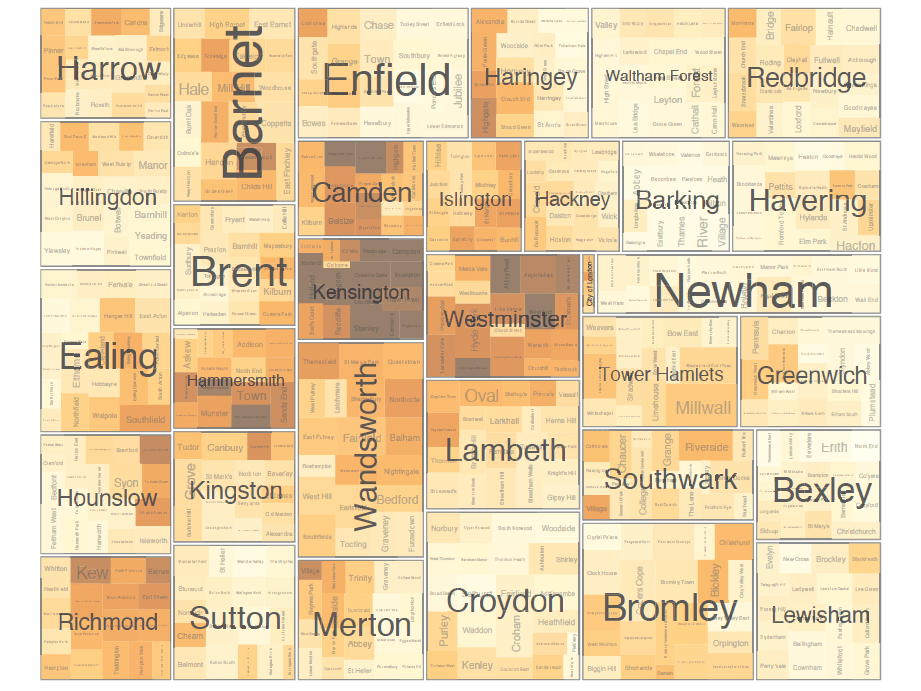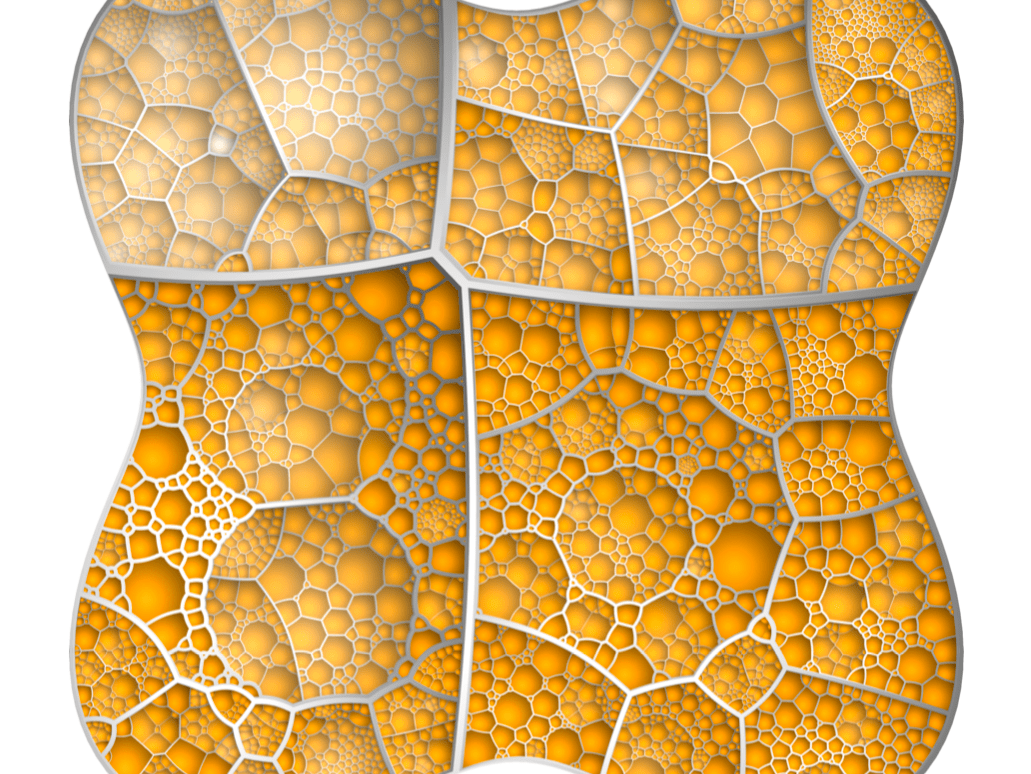Leaf-centric layouts are those that only or predominantly allocate screen space for the leaves of a multivariate tree and encode the hierarchy by inclusion/nesting. The classical example of this type of layout is the Treemap, originally proposed by Johnson and Shneiderman.
Optimized for tree structures and tasks on single nodes and subnetworks.
Suports medium and large networks with over 1000 nodes, as well as tasks on neighbors.
Not ideal for several, heterogenous node attributes or tasks on paths.
Does not support edge attributes or non-tree like networks, as well as tasks on clusters.


